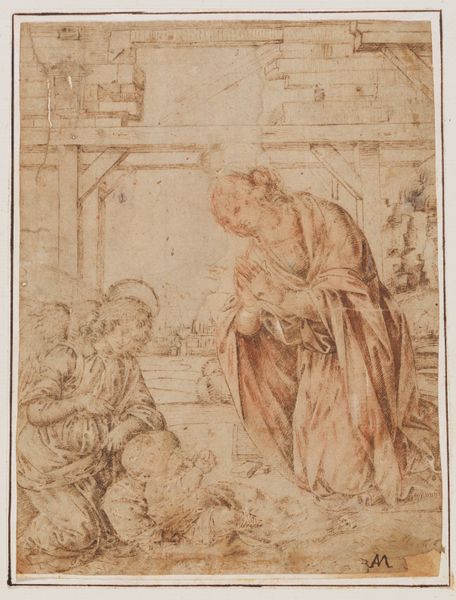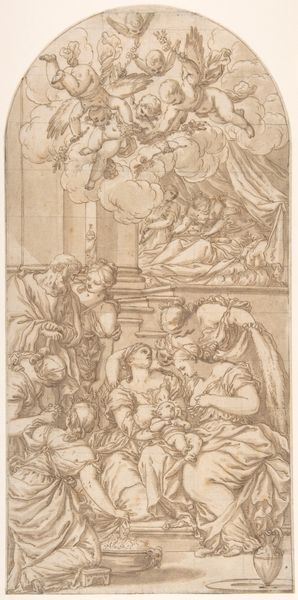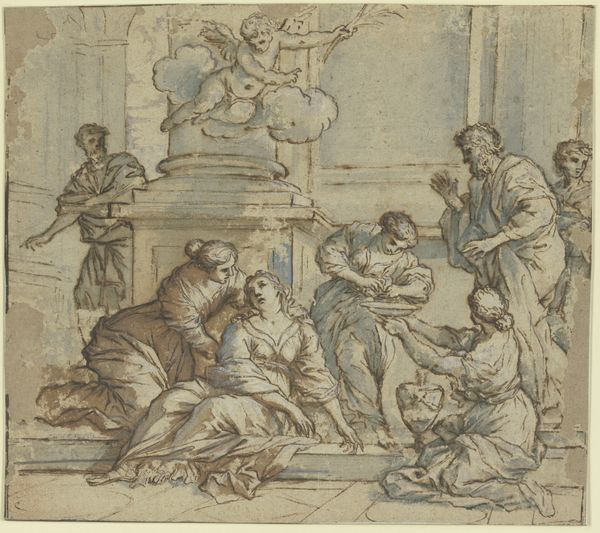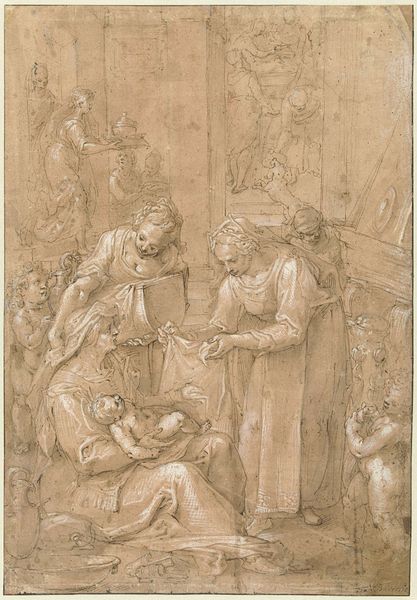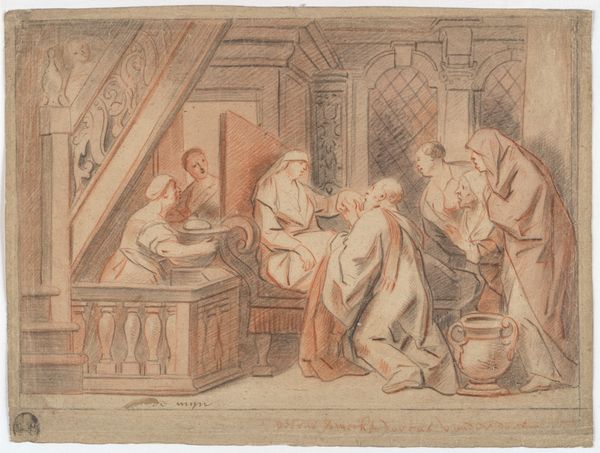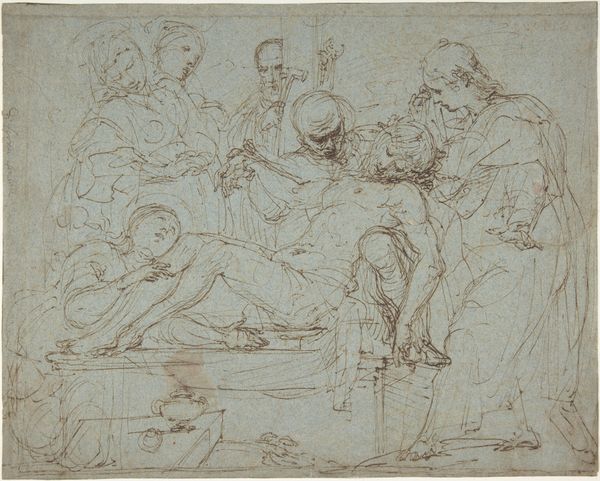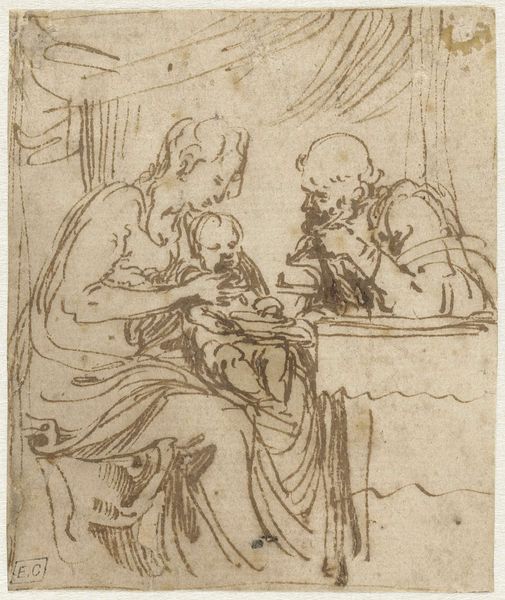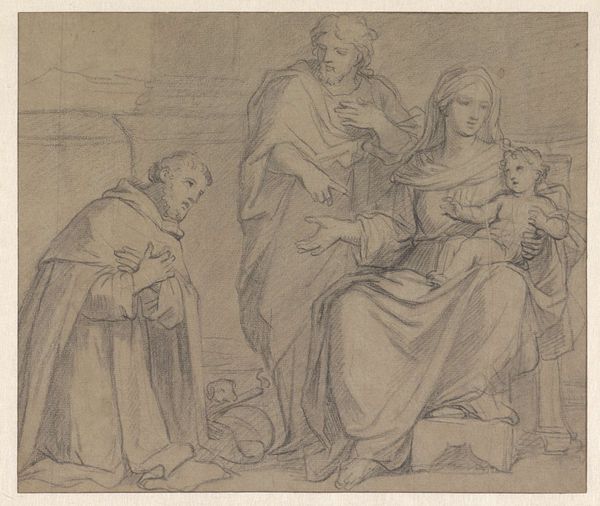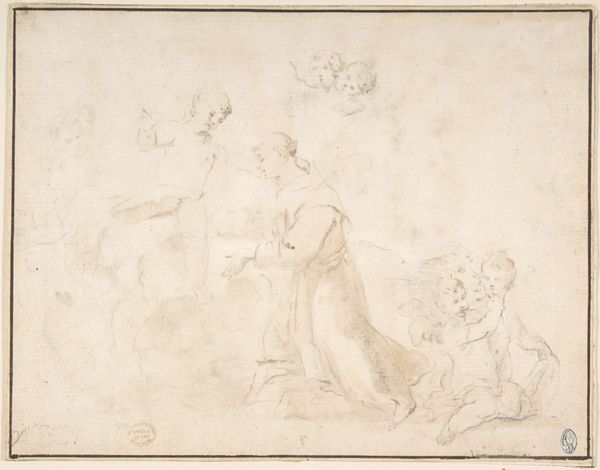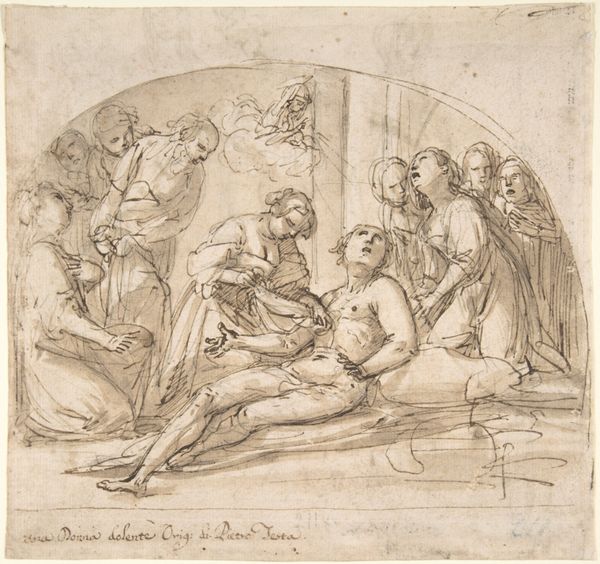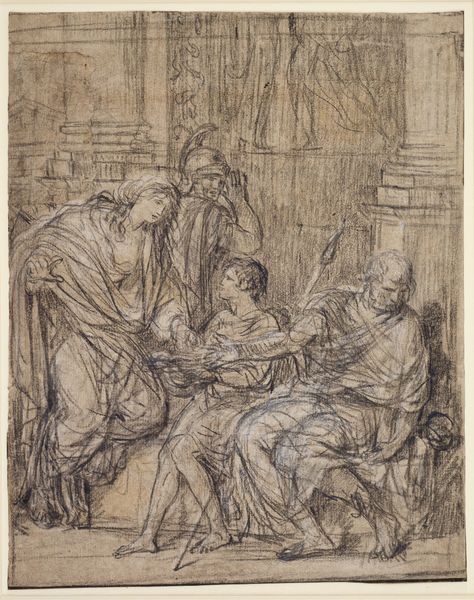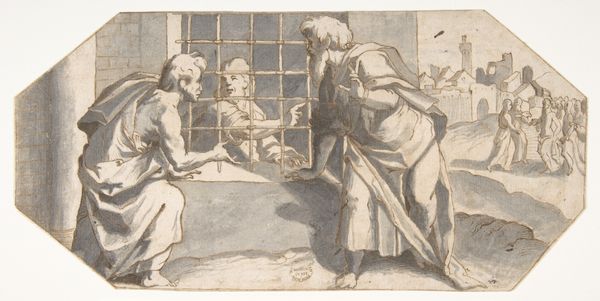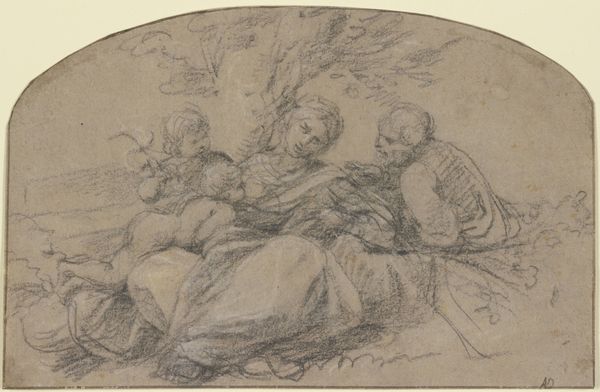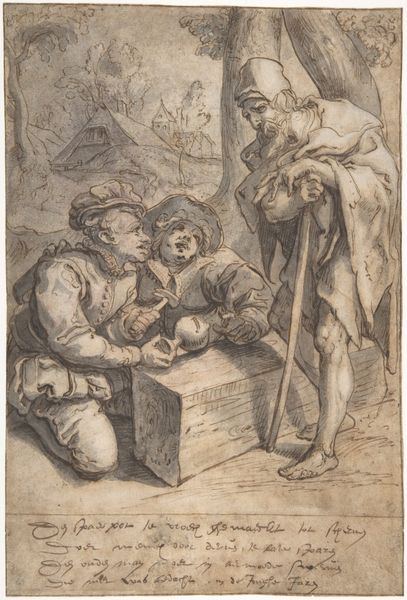
Two women and three children in an interior 1556 - 1629
0:00
0:00
drawing, print, ink, pencil, charcoal
#
drawing
# print
#
charcoal drawing
#
figuration
#
ink
#
child
#
coloured pencil
#
pencil
#
genre-painting
#
charcoal
#
northern-renaissance
Dimensions: sheet: 4 5/16 x 5 1/4 in. (11 x 13.4 cm)
Copyright: Public Domain
Curator: Today, we’re observing “Two Women and Three Children in an Interior,” a drawing attributed to Otto van Veen, active between 1556 and 1629. It resides here at The Metropolitan Museum of Art. Editor: What strikes me immediately is the dynamic composition, the way the artist uses line to create movement and a sense of domestic chaos, even. The tones are muted, monochromatic—is it chalk, or ink wash perhaps? It gives the scene a very earthy quality. Curator: Indeed. The artwork is rendered in ink, pencil, and charcoal. It depicts a genre scene, capturing everyday life. Look at the postures: one woman seems to be preventing a toddler from falling off furniture, another lunges towards a prone infant, while a child in the background engages in what appears to be carpentry. Editor: Right, and the fall seems key—the repetition. The one held aloft and the one collapsed suggest anxieties about care. The implied narratives, though ambiguous, evoke the constant, precarious labor of motherhood, that struggle against entropy itself. Curator: Absolutely. And let’s not forget the third child occupied with woodworking. This imagery might allude to vocational instruction within the household, symbolizing familial continuity and the transmission of skills across generations. This kind of imagery often carries didactic intentions, communicating values regarding motherhood and childhood within a northern European context. Editor: The perspective is curious, flattened almost. Figures aren’t precisely rendered, losing volume through simple lines. Van Veen seems less concerned with realism than with the gestural depiction of emotion and activity, highlighting a rhythm within this busy home interior. The subtle shading does highlight certain aspects, but it’s mainly about the choreography of forms, isn't it? Curator: Precisely. Though it might not showcase high Renaissance mastery, its enduring appeal lies in its ability to capture the universal tensions within family life, made timeless through skillful rendering. Editor: So, not only an artful rendering but an icon of timeless maternal struggles? It certainly carries that weight effectively, regardless of the medium's modesty.
Comments
No comments
Be the first to comment and join the conversation on the ultimate creative platform.
